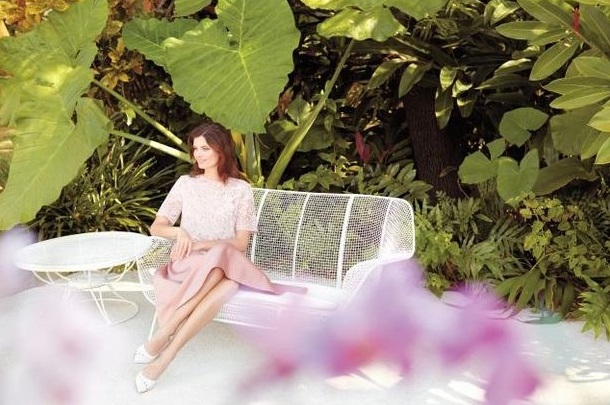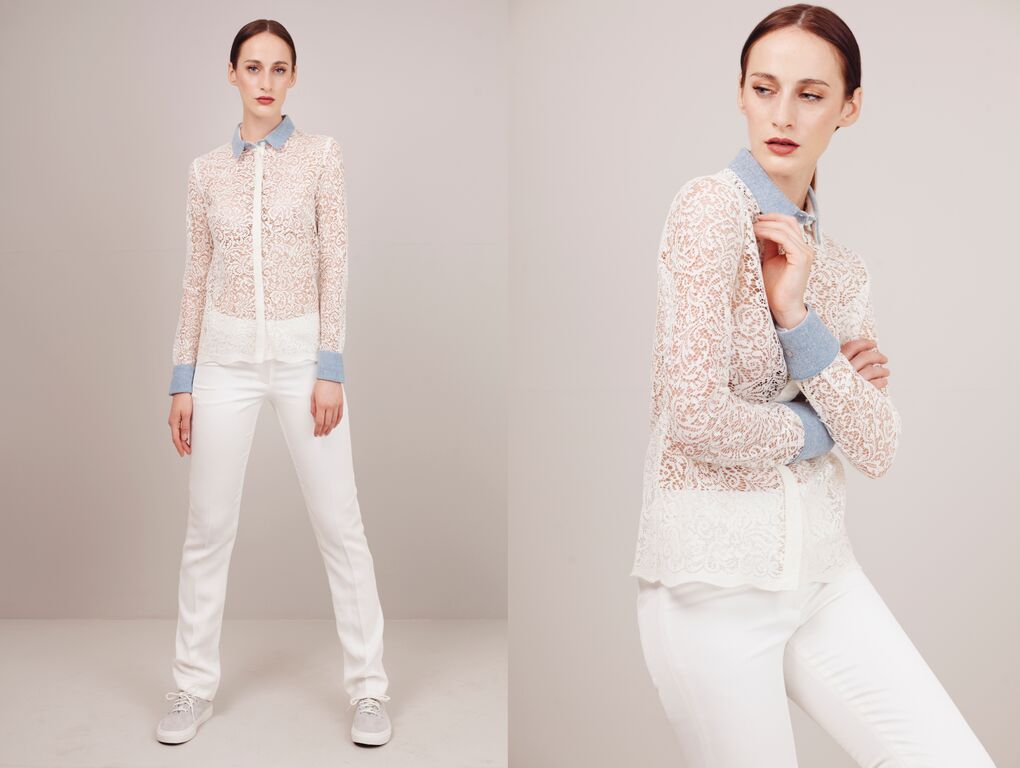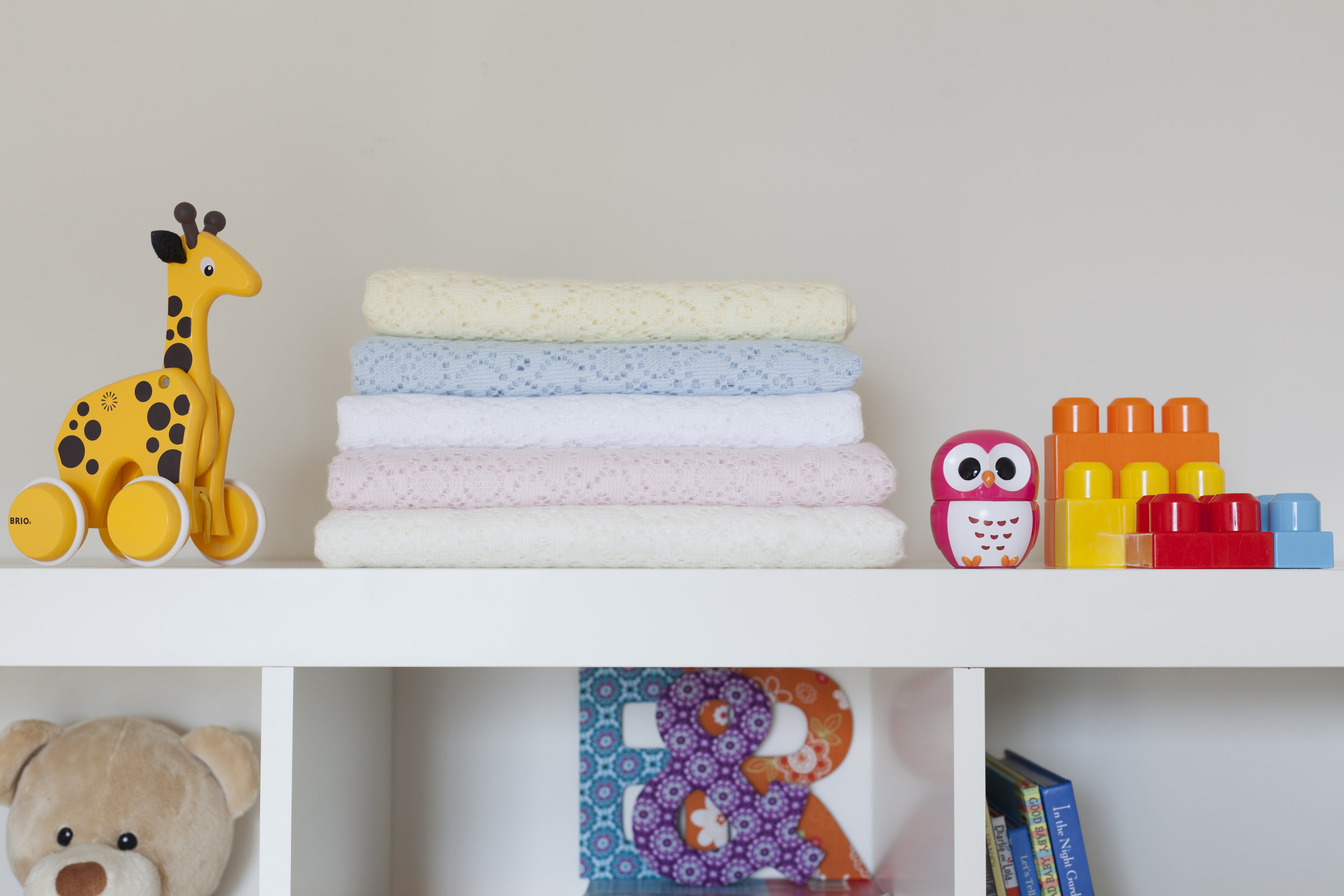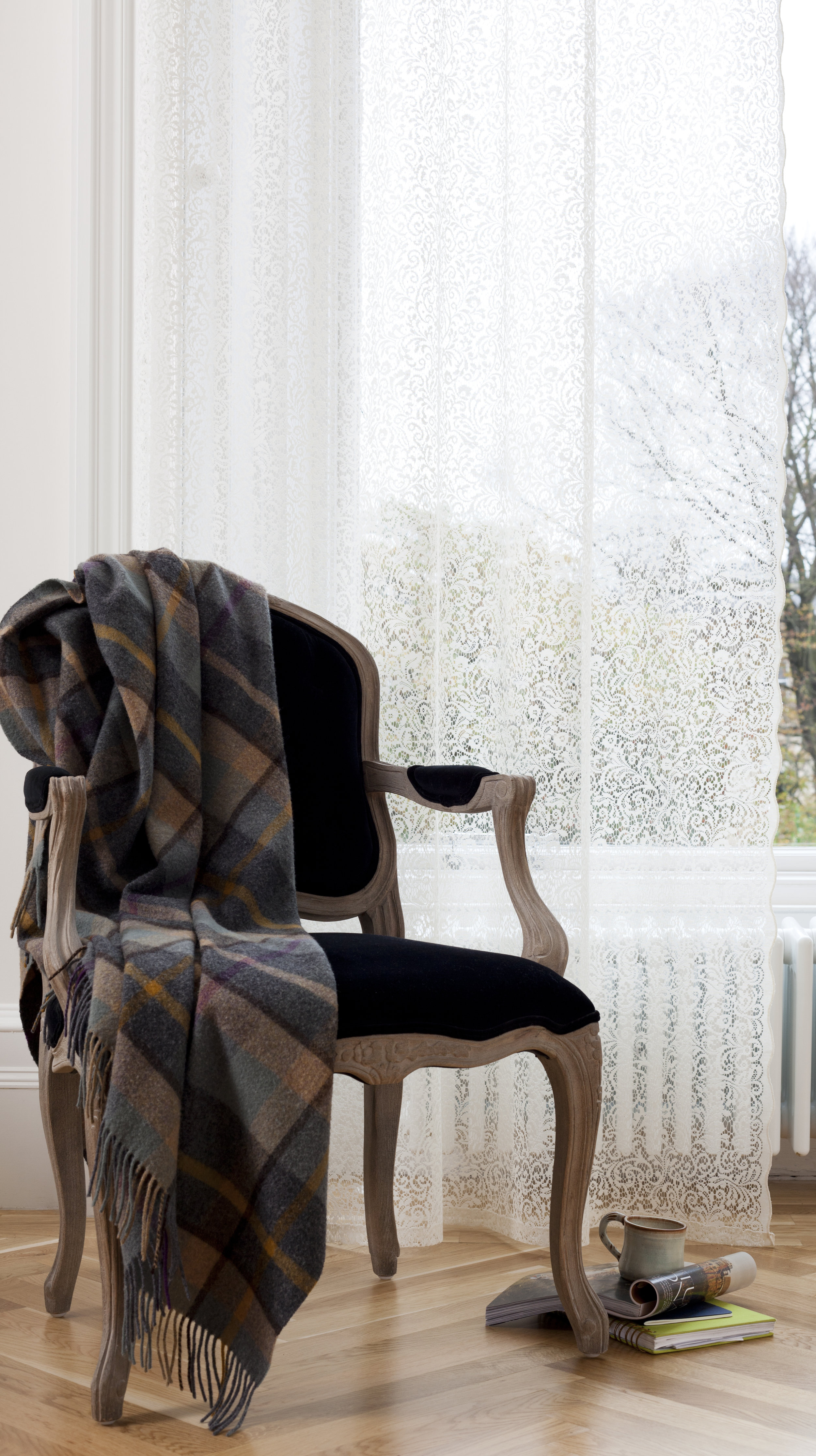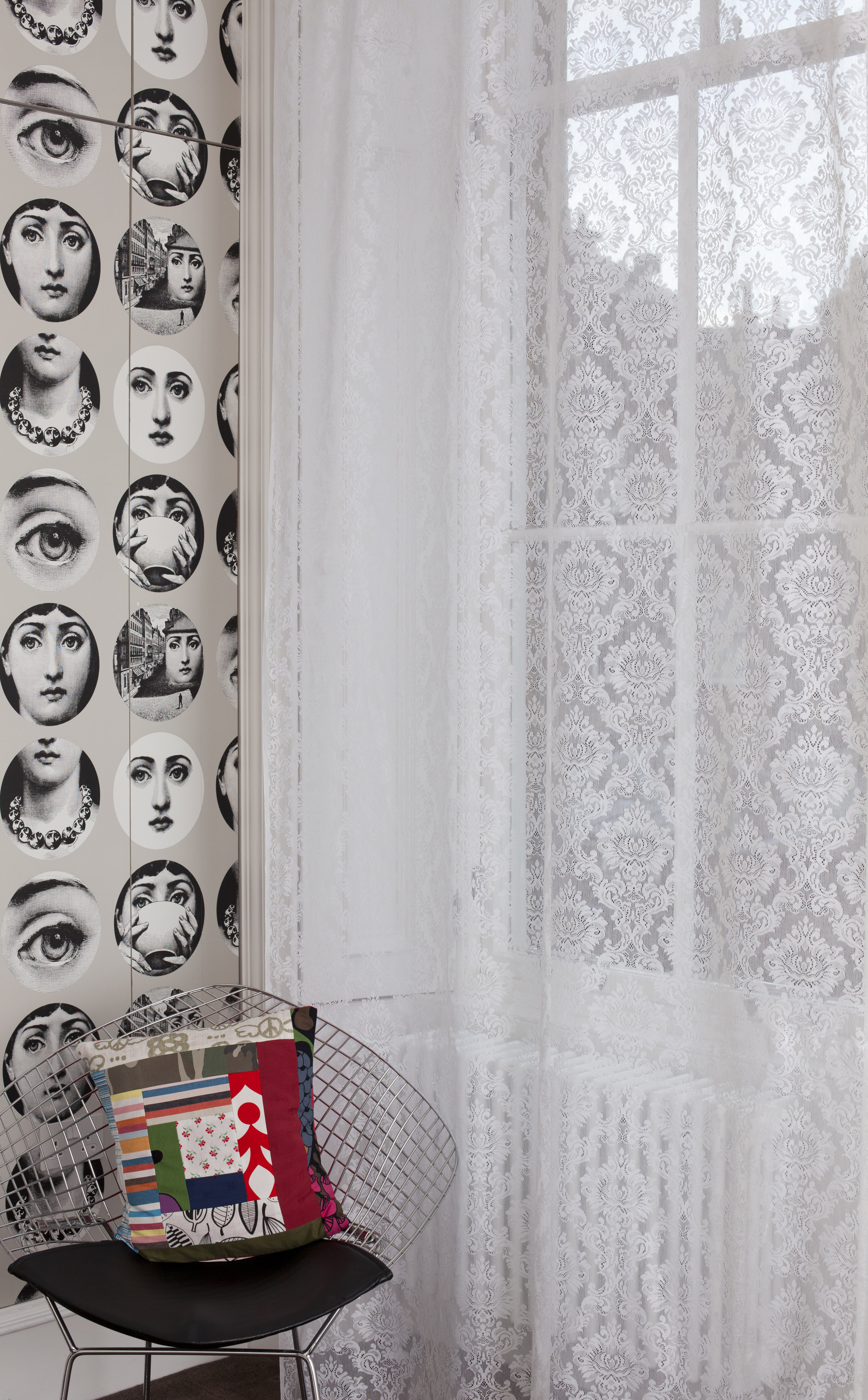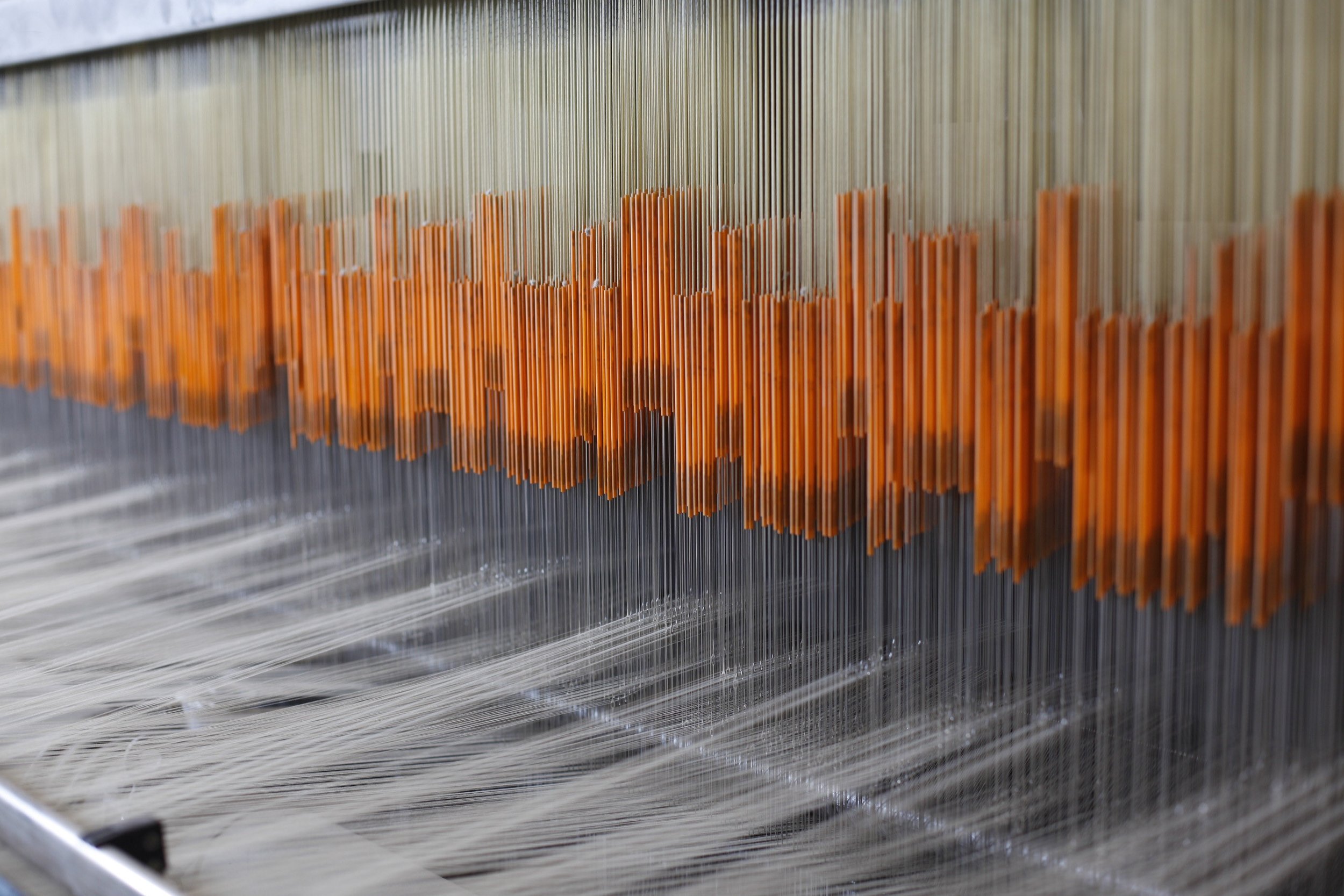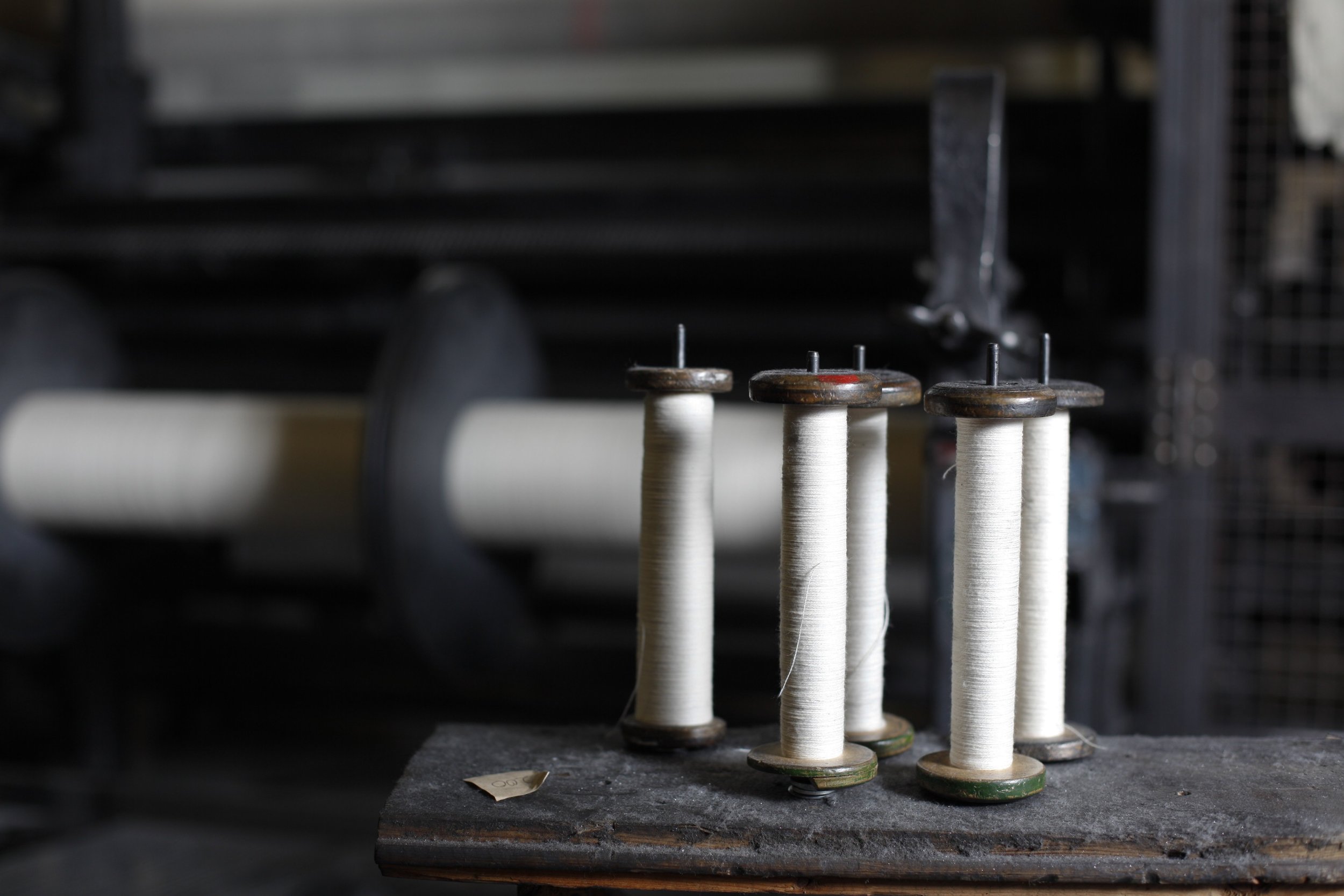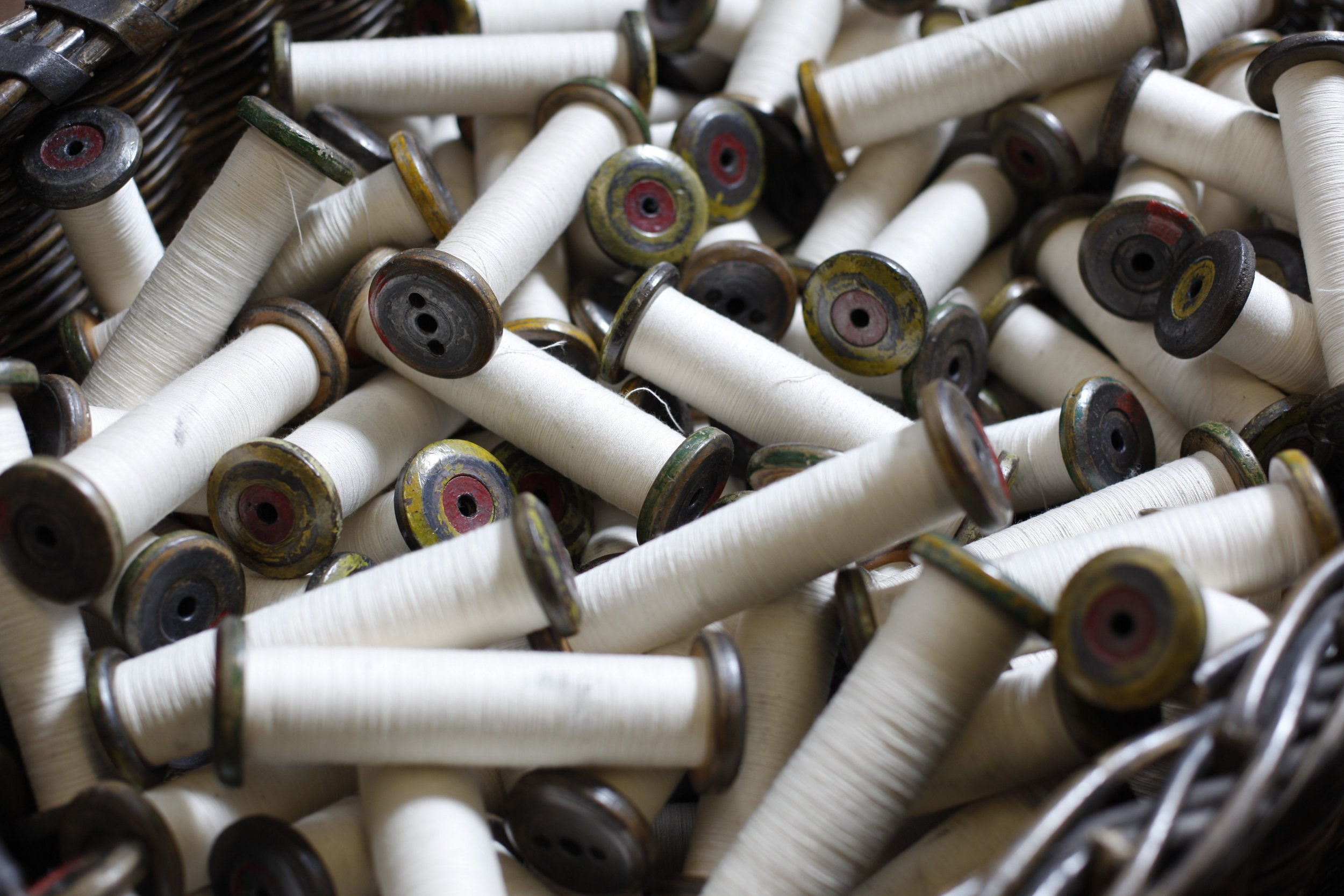MYB Textiles
/With a busy summer drawing to a close it is time to focus the mind again and focus on my lovely readers. So with the new season in mind I decided to get up and running with a fun competition in collaboration with my latest feature on MYB Textiles. One of the last remaining mills in Ayshire in Scotland, dating back to 1900. MYB still weave traditional lace, however through recent developments and innovations (read on to learn more) they are now bringing the mill into the 21st century to produce fabrics that top designers such as David Collins and exclusive venues, the likes of Soho House are commissioning. Their luxury fabrics are also being commissioned by leading fashion labels and can be seen on the catwalk for luxury brands such as Pavane, Hobbs and Mairi McDonald, see images below.
The competition to win a stunning baby's blanket from MYB will be over on my Instagram feed, so come on over and join the Insta-party and start sharing the love to be in with a chance of winning!
MYB Textiles Baby Blankets
While you're at it I would be really grateful if you could please spare two seconds to vote for me for the Amara Blog Awards, I'm totally stoked to be nominated for the newcomer blog but know I need every bit of help I can get!
Now let me introduce you to the innovative producer of Lace and Madras, MYB Textiles...
What is the history of MYB Textiles?
Morton Young and Borland Ltd was founded in 1900 in the Irvine Valley of Ayrshire, Scotland by Thomas Morton, Alexander Young and John Borland.
“Handloom weaving was brought to the Irvine Valley by Flemish refugees who settled in the area at the end of the 16th Century. There was a well-established knowledge of this craft in the valley towns when Alexander Morton introduced lace making in 1876, this was shortly followed by the invention of the Power Loom in 1877, the technology of which is still relevant today. Many large mills began to emerge in the towns of Newmilns and Darvel. The industry became the largest employer in the area with Morton Young and Borland being one of the larger mills.”
The Founders of MYB Textiles
What makes MYB Textiles so special?
MYB Textiles is now the only producer in the world manufacturing patterned lace with original Nottingham Lace Looms, some of which are over 90 years old and up to 1220cms wide. This manufacturing process is extremely labour intensive. The looms run at a very slow, controlled pace so as to give a high level of quality control: this attention to detail gives the product its niche.
Not one to rest on our laurels we continually look to develop our range! Most recently venturing in to the contract market by developing a range of inherently flame retardant Trevira CS fabrics, using technically advanced yarns on heritage fabrics sets us apart from potential competitors. We also take our cue from trends and changing tastes. One of our more recent collections ‘Galloway’ was influenced by architectural, simple, stylized geometric patterns, complimented by luxurious plain sheer wools and linens. This was a step away from our ‘house style’ in order to challenge people’s perceptions as to what lace is and can be. This enabled us to introduce our brand to more modern design houses and clients who assume lace can only be traditional, delicate often verging on kitsch! We are also very receptive to customer demand and collaborations. We often create bespoke designs on a per project basis and pride ourselves on having flexible production schedule to accommodate for bespoke work.
As a producer ofLace and Madras, could you explain what the term ‘madras’ means?
Madras’ technical name is actually Scotch Leno Gauze Weave – A bit of a mouthful! But as so much of the fabric was sent to Madras -now known as Chennai- in India, this naturally became is nickname. The leno means that the warps thread twists to secure the weft, making it more secure and stable than a standard gauze weave. It is a sheer clipped face fabric, the weft yarns are woven in when there is pattern and then floats where there isn’t. The fabric is then passed through a clipping machine, where the floats are sheared off revealing the pattern and sheer area.
The company has shown true innovation over the years to be one of the only surviving mills of its kind, how have you done this?
Lace and madras weaving continued to flourish until the late 1970s, but the struggle for companies to compete with the distribution of emerging European and Asian economies had a profound effect on the Scottish textile industry. Over the following 20 years many companies failed to recognise changing buying trends or to keep their plants up to date. Most importantly, they neglected the importance of training for succession. This resulted in the closure of almost all of the factories in the area with Morton Young and Borland now being the last remaining lace and madras producer.
Many of our counterparts began focussing on new emerging synthetic yarns- such as nylon and teryline in order to offer lower price, easy care fabrics. MYB concentrated on producing fabrics as they were originally, with quality cotton yarns, thus maintain a focus on luxury and niche markets as opposed to mass market. In recent history, when most mills were dependent on a few key suppliers, MYB began to branch out and created their own brand collection in order to expand into direct sales with designers and wholesalers. This proved to be our saving grace, as the mills that were dependent on bulk orders for a few key clients suffered when their clients made cuts and paired back collection lines and stock ordering.
Who is now running MYB Textiles and pushing it forward into the 21st Century with the introduction of CAD software?
Scott Davidson took over the company in 2001 from the last relation in the MYB family. Having worked in the business since the age of 16 starting in the despatch department and working his way up into sales and management, he had a great understanding of how the business worked and had ideas of his own as to how best to move it forward. It was Scott who really pushed the development of our own brand of collections to sell direct to designers and wholesalers. Branching out into this avenue enabled MYB to become more independent and less reliant on bulk orders from large interior brands which were becoming scarce as the economic climate changed. This change in business strategy made it necessary to introduce automation to our machines, by investing heavily in electronic harnesses for our looms and modern CAD systems for the designers, it allowed MYB to be receptive to change and responsive to market demand. We could create new designs freely, weave bespoke work quickly and up our rate our cloth production.
Scott Davidson - MD of MYB Textiles
How does the CAD technology now work with the old looms? Could you talk us through the process?
Our looms are all fitted with Jacquard harnesses, enabling us to weave highly patterned designs. Historically this meant that when a design was created it had to be transferred meticulously by hand onto draught graft paper, each square representing a single stitch on the cloth. The draught was then translated onto jacquard punch card, where a stitch translates into a punched hole and left blank where there isn’t one. There is a single punch card for each row of stitches, so you can imagine that a design with a large repeat results in having thousands of cards! By installing an electronic harness this cuts out all these time consuming processes as the computer does all the hard work, but virtually recreating the punch cards and dictating what the harness show do - So what used to take weeks now take mere minutes!
Where do you find inspiration for your designs?
From any number of places, from business trips, holidays and almost always from our own archive!
As most MYB fabrics are sourced from original archive drawings, they are able to supply historically accurate designs for many film and television productions. Failing the discovery of an exact time period match amongst the MYB collections, exclusive pieces are often created. The team have immediate access to the mill’s own 100 year old design archive, which consists of over 50,000 original pieces of cloth and drawings covering every period of art and design in that time. In addition, the design archives of several other local mills were purchased when they closed, collectively containing an additional 20,000 original designs. This contributes greatly to the wealth of knowledge and capability of the design team.
How do you ensure that the quality and skills and continued?
We have a wealth of knowledge and skills within our workforce. We are lucky to have employees who are very talented and skilled with years of knowledge and experience under their belts. All our cloth is inspected by eye at every stage of production and is mended and darned meticulously by hand. We feel it is essential to continue these practices into the future to preserve our quality and heritage and we plan to do this by training through succession. We already have trained a lace designer through an in house apprenticeship over 4 years, therefore securing those skills for another generation! And we plan to this for other departments across the business too.
MYB Textiles are recognised worldwide for their commitment to the highest quality of production – driven by continual product and design innovation, new technology and a highly skilled workforce. This enables MYB to supply both volume and small runs of bespoke designs quickly, whilst maintaining the highest quality standards in the industry. The skills prevalent in the creation of any piece of fabric produced in the mill are passed on from generation to generation through apprenticeships. The techniques used are so tailored to tradition that they can only be taught in-house, a teaching process vital to the survival of MYB.
What is your lace and madras made from?
Our lace is always 95% Cotton 5% Polyester. This gives a soft and luxurious handle and sets our fabrics apart from other synthetic laces. We need the 5% polyester because of the fineness of the yarn, it secure the yarns together when weaving and gives the fabric added strength.
Our madras is often 100% Cotton. The added intrigue with the madras however, we can weave with different yarns in the weft. Quite often we use wool and linen to add colour and texture. We also weave with fancy yarns like Viscose and Lurex to add shine and opulence. Our best selling and most sought after fabrics are often our cotton designs dyed to a soft light Ivory colour.
What has been your most fun collaboration recently?
We have been lucky to be a part of many exciting collaborations. One of our biggest champions in the design world is Timorous Beasties. We have translated many of their iconic and quirky designs onto our lace fabric so when we created our Paper Lace collection it was only natural that we sought advice and guidance from the team at Timorous Beasties, who agreed to collaborate with us. Our best-selling original1920’s Lydia design was chosen to be translated, and the team at Timorous Beasties scanned the fabric into their CAD system and meticulously copied the stiches and pattern of the fabric so it was print ready. They really understood the need to communicate the quality of the lace fabric onto the paper resulting in the wallpaper looking almost fabric like, making it almost impossible not to touch to see if it is lace or not!
To learn more about MYB Textiles please take a look at their site www.mybtextiles.com or over on their instagram feed
This is not a sponsored post
All images are courtesy of MYB Textiles



